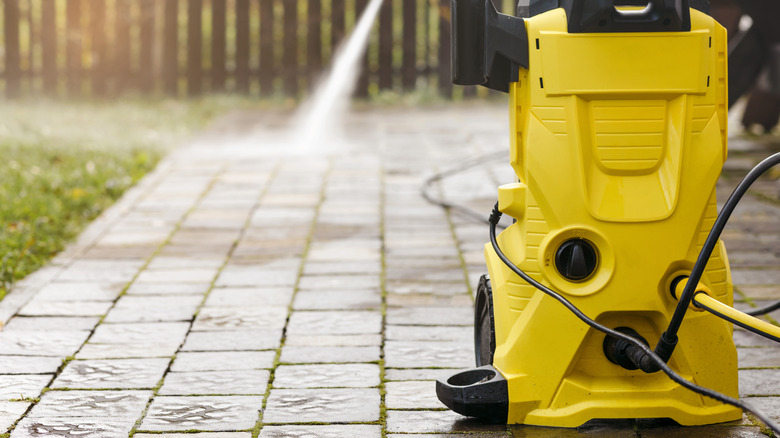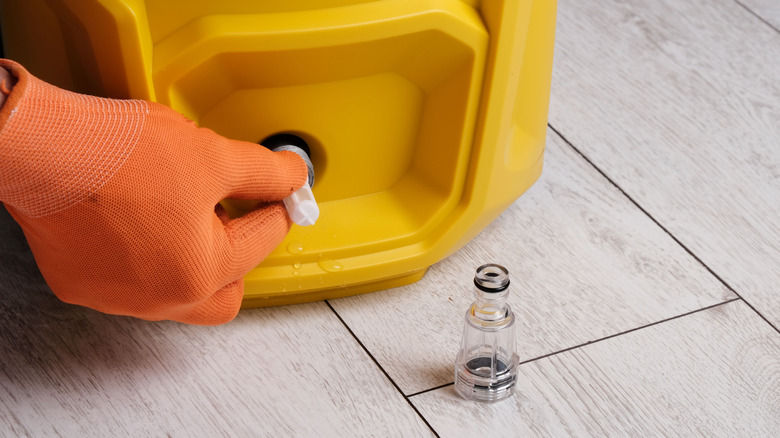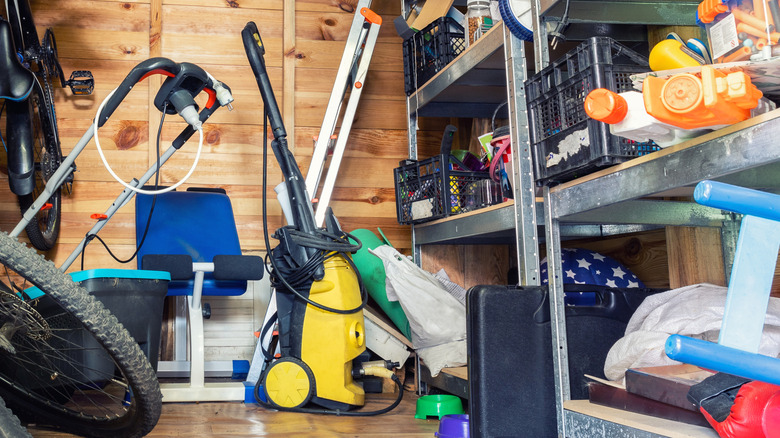How To Clean & Prepare Your Pressure Washer For Winter So It Doesn't Freeze
We may receive a commission on purchases made from links.
Pressure washers are an extremely handy tool to have. They are brilliant at tackling those hard-to-clean areas outside of your home. For example, pressure washers make easy work of cleaning driveways, patios, roofs, and more, which would otherwise be an extremely hard and time-consuming manual task. These cleaning jobs are for the warmer months, and after you've successfully ticked them off your to-do list and you feel the cooler air start to roll in, it's time to make sure your pressure washer is clean and prepped for the winter ahead.
If you decide not to follow this process, you run the risk of your pressure washer freezing, which can cause the pipes and other components to potentially freeze and break. To avoid this, you'll want to take the proper precautions when cleaning your gas pressure washer and preparing it for winter, which involve scrubbing the exterior, changing the filters, getting rid of any excess water, and draining the gas. Make sure you do this before the weather gets too cold. This will save you money in the long run and will hopefully mean you can use your pressure washer for years to come.
How to clean your pressure washer
Firstly, focus on washing and cleaning the exterior. All that should be needed for this is a mixture of warm water and mild dish soap. Use a stiff brush dipped into the mixture and brush away any loose debris or dirt. Then go in with a sponge to fully scrub the outside of your pressure washer. Rinse it with fresh water, and dry it off with a cloth.
The nozzle on a pressure washer is key to making sure the machine functions properly, so you want to take care of it. Remove the nozzle from the machine, take a pin or a needle, and poke the hole or holes where the water gets released from. This will free any small dirt blockages and improve the effectiveness of your pressure washer.
Finally, check and change the filters. The filters in a pressure washer protect the mechanics of the washer by catching any debris that may be in the water supply. If you have a reusable filter, clean it using water and mild dish soap, and remove any obvious bits of dirt. For disposable filters, it's recommended to change these every season if you use your pressure washer frequently.
Protect your pressure washer during winter
Now you've given your pressure washer a good, thorough clean, you'll want to prepare it for winter to protect it against the frost. Empty your pressure washer so there is no water left in the tank. This is especially important if you store your pressure washer outside or in a shed that's not very well isolated, as this could cause the water to freeze and damage the machine. It's now time to drain the gas. Many gas pressure washers have a small gas engine that can't easily be emptied; therefore, you need to use a hand siphon to safely remove the gas from the machine. Or be sure to use up all of the gas throughout the summer before it's time to store it for winter.
To be on the safe side, you should add antifreeze to your pressure washer to protect it during the colder months. Simply add it to the water line and fuel pump so the system doesn't freeze. You can pick up a bottle of antifreeze, such as JB Industries Pump Guard, for less than $10 from Amazon.
Another tip is to remove any hoses and store them indoors. Gas pressure washers can be quite clunky, hence why you'd want to store them in a shed or a garage. However, the high-pressure hose can easily be disconnected and stored inside without taking up too much room. This will make sure it doesn't get damaged, become brittle in the colder weather, or even get nibbled by pests. If you follow these steps, you'll achieve dazzling results with your pressure washer every season.


